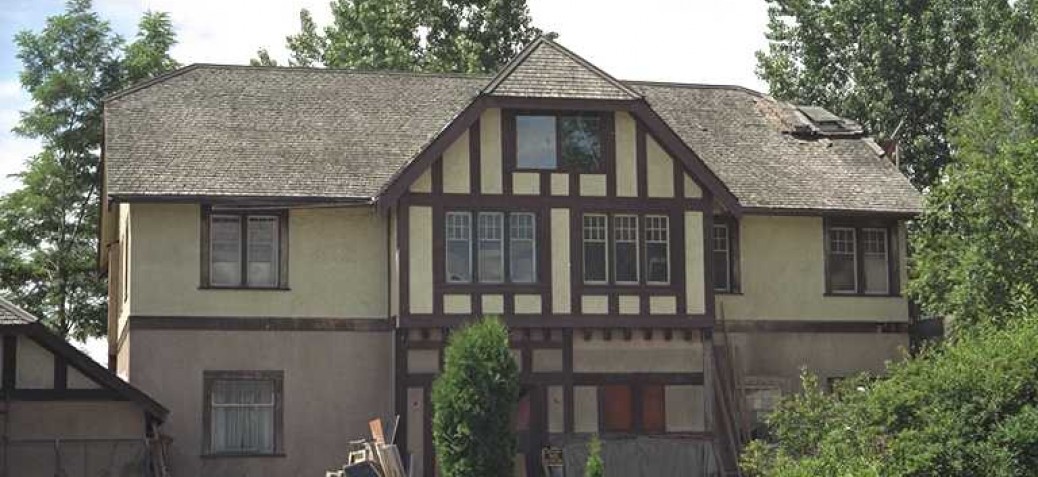Jennens House
Place Description
The Jennens House is a large two and one-half storey wood-frame British Arts and Crafts style residence with stucco cladding and half-timbered detail. It is distinguished by a high jerkin-headed roof with front and rear jerkin-headed gables. The front facade is dominated by a central projecting entrance bay while the lakefront facade has symmetrical projecting bays at each end. The house is set on a large beachfront lot, fronting the east shore of Lake Okanagan. Located in Kelowna's historic Abbott Street neighbourhood, the site retains its original half-timbered garage, now converted for residential use, and is surrounded by mature coniferous trees.
Heritage Value
Built in 1930, the Jennens House is valued as a sophisticated example of British Arts and Crafts architecture. The house features a stucco-clad and half-timbered exterior, and reflects the traditional period revival architecture favoured during the period between the two World Wars. The house is notable for its large expanse of multi-paned windows on the lakeshore facade that afford views of the lake and distant scenery. The designer and contractor of this prominent house was local contractor Robert Rowley (1862-1939).
Furthermore, the house is of heritage significance for its association with the Jennens family, reflecting their role in the economic and social history of Kelowna. The Jennens family commissioned the house in 1930, and continue to own and occupy it. Oliver Jennens (1890-1940) was a noted local businessman associated with B.C. Growers Ltd., and with B.C. Orchards of which he was managing director from 1927 to the late 1930s. His son, Eric Gordon Jennens, is remembered for building a full-size Viking ship with which he attempted to replicate Leif Erikson's late-tenth-century voyage to North America. Eric Jennens is also remembered for developing a harvester for Eurasian water milfoil weed (an invasive, non-native aquatic species).
Notably, the house is significant as a demonstration of the economic activity and wealth of Kelowna during the 1920s and 1930s when the fruit industry became the driving economic engine of the area. Many of those involved in this business, such as the initial owner of this house, could afford to build grand houses on large estate properties, even at a time of country-wide depression. The Jennens House forms part of an assemblage of stately homes on the lakefront, and demonstrates the importance Kelowna residents have placed on Okanagan Lake and on the lifestyle and recreation it provides.
Character Defining Elements
Key elements that define the heritage character of the Jennens House include its:
- location on the east shore of Lake Okanagan and orientation to the lake, with large mature coniferous trees in yard;
- residential form, scale, and massing as expressed by its two and one-half storey height and symmetrical boxy proportions;
- high jerkin-headed roof with front and rear jerkin-headed gables, clad with cedar shingles;
- British Arts and Crafts details such as its half-timbering and roughcast stucco cladding, exposed beam ends, and a pronounced timber plat course between the storeys;
- additional exterior elements such as its arched front entry assembly with glazed door and sidelights on the front facade, and 12-light door on the lakeshore facade;
- regular and symmetrical fenestration: multiple assembly 6-over-1 double-hung wooden-sash windows on the lakefront ground floor, 12-over-1 double-hung wooden-sash windows on the front facade ground floor, 6-over-1 double-hung wooden-sash windows on the second storey, a large central window on the lakeshore facade ground level with a 24-pane transom; and
- associated garage, now converted for residential use.





